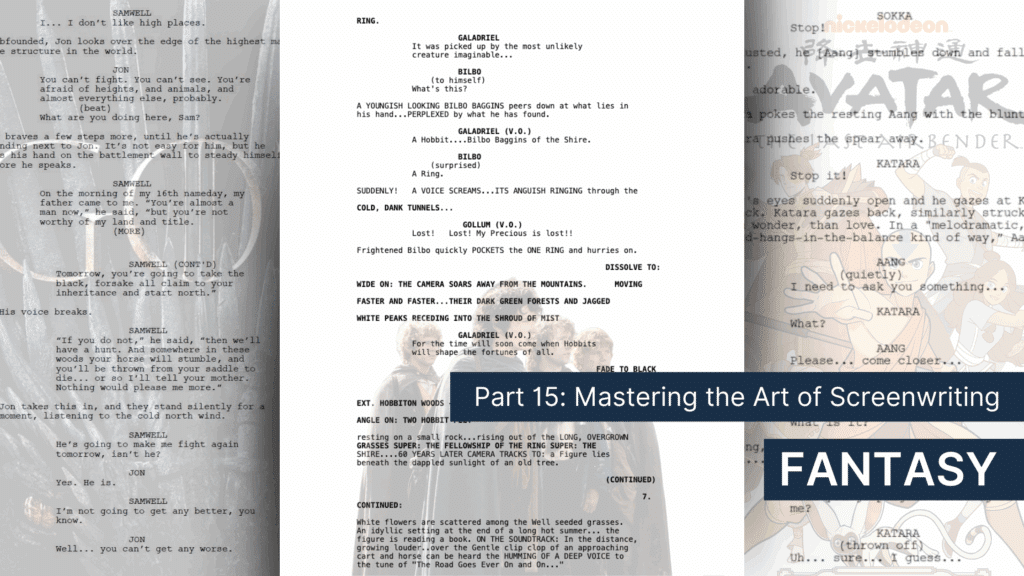
Greetings and salutations! Welcome back to our Mastering the Art of Screenwriting series.
Today we’ll be venturing out on an epic quest: to crack the fantasy genre. Boy, am I excited for this one!
Fantasy stories have captivated audiences for centuries, transporting us to realms of dragons, magic, and myths. If you’re a Lord of the Rings, Game of Thrones, The Witcher or Avatar: The Last Airbender fan (or perhaps, all of them!), you’ll be familiar with the epic scale of those stories driven by intimately human journeys.

I wouldn’t be surprised if you wanted to craft your own fantasy script, creating your very own world filled with wonder and the joy of make believe.
But how do you write a fantasy screenplay that feels both cinematic and cohesive?
In this new instalment of our series, we’ll explore the core elements of writing a fantasy script that leaps off the page and screen.
We invite you to join us on this adventure into the world of fantasy.
Table of Contents
- What Makes a Fantasy Story Work on Screen?
- How to Write Fantasy: World-Building
- Magic Systems, Mythology, and Logic
- Building Characters Who Belong in the World
- Building a Strong Fantasy Structure
- Fantasy Tropes to Embrace or Avoid
- Writing Visually in Fantasy
- Final Tips
- Conclusion
What Makes a Fantasy Story Work on Screen?
While fantasy literature has the freedom to sprawl across hundreds of pages with dense exposition and even expansive footnotes, we as screenwriters don’t have that luxury.
A screenplay must distill that richness into a visually compelling and emotionally resonate piece of work within a tight timeframe.
So, how do we do that? Well, here are three rules we swear by when it comes to fantasy scripts:
- The rules are clear.
- The stakes are grounded.
- Characters drive the story.
When it comes to fantasy (just like sci-fi), you’ll usually be building a whole new world from scratch. Your audience will need to understand what’s possible, and most importantly, what’s not. They must also care about the outcome, whether the quest is to save a kingdom at risk or retrieving a stolen heirloom, for example.
But behind all the conflict, magic and marvel, you need to have a compelling character journey for your audience to follow. It’s the hero’s journey or the villain’s tragedy that keeps them watching.
‘‘I don’t subscribe at all to the idea where it’s fantasy so it can’t be real. The best fantasy is real.’’ – Peter Jackson, Stuff.co.nz interview (2012)
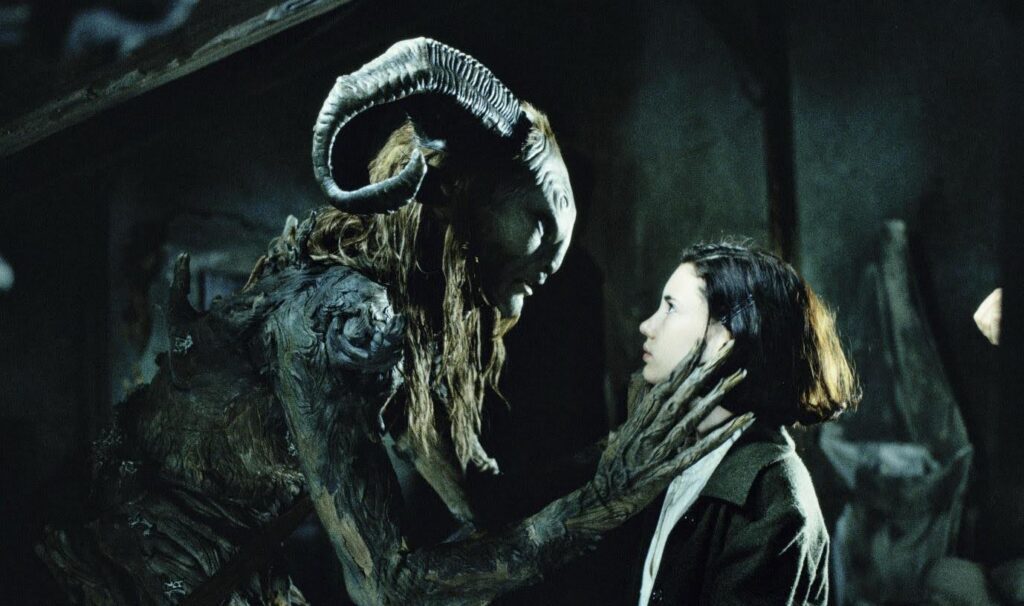
How to Write Fantasy: World Building
Think of your fantasy world as a character in itself. No matter how exciting and engaging the world, it lives or dies by its credibility and texture. That’s why it’s important to get it right.
From desert empires built on sand magic to subterranean societies of mushroom folk, the world must stay internally consistent, despite how outlandish it may be.
As you’re building your world, ask yourself:
- What are the political systems, religions, and economies of your world?
- How does geography shape the culture?
- What are the daily lives of the people who live here?
While you may have reams of information pertaining to your world, it’s essential that you don’t cram blocks of exposition into your screenplay. Focus on revealing the world organically throughout the script instead through dialogue and visuals.
World building shouldn’t just set the stage either. It should create conflict, character motivation, and thematic depth.
For a complete breakdown world-building, whether you’re writing fantasy or a comedy or anything in between, check out our guide here!
Magic Systems, Mythology, and Logic
Magic is one of the many jobs of fantasy, but without logic it’s just cheating!
Your story could feature necromancers, rune-powered weapons or wish-granting fountains. Whatever the magic system, it needs rules and consequences.
Magic systems with hard lines and clear significances are often called hard magic systems (think Brandon Sanderson’s novels) whereas soft magic systems like those created by Tolkien, are more mysterious and unknowable, often used more for atmospheric purposes than plot mechanics.

Of course, this wouldn’t be a Celtx blog without some practical top tips. To create a believable magic system, you should:
- Set boundaries (What the magic can and cannot do.)
- Define costs (Does using magic cause fatigue, madness, or social exile?)
- Incorporate mythology (Who discovered or bestowed magic? Was it divine, elemental, or alien in origin?)
Remember, constraints within a magic system are your best friend! While it may seem restrictive, it’s this restriction that breeds conflict within your story and even can help you be more creative.
Building Characters Who Belong in the World
Within the fantasy genre, it can be tempting to make characters the archetypes: the chosen one, the dark lord, the wise mentor. But cliches only become interesting when given depth, history, and nuance.
When writing fantasy characters, they should feel like they were shaped in the world they live in. For example, you might have:
- A thief who grew up in a sky-city will have different instincts to one raised in a subterranean city.
- A sorceress might hide her power in a land where magic is outlawed but flaunt it if sorcerers are revered people in the world.
- A knight bound by a blood oath to a dying king might wrestle between his duty and wavering loyalty.
So, how do we ground fantasy characters so they’re believable and resonate emotionally?
- Give them personal stakes that align or clash with the story’s goals.
- Let their relationships reflect the world’s values and tensions.
- Show how their culture, religion, and environment shape their worldview.
Next, let’s look at some stand-out examples of how well-known fantasy characters subvert the world to become a compelling person worth following on their journey.
Case Study #1 | Arya Stark
Take Arya Stark from Game of Thrones. She is a noble-born girl in the patriarchal, war-torn feudal society of Westeros where social roles are rigid. But she rejects the role of a ‘lady’ and opts to forge her own identity through vengeance, survival and independence.

Case Study #2 | Galadriel
In Rings of Power, Galadriel is an immortal elf living in a mythic age of high magic, prophecy and ancestral conflict. Her culture values beauty, wisdom, and restraint, something she’s at odds with. Instead of following the path set out for her, she hunts Sauron, her vengeance more important to her than tradition.

Case Study #3 | Aang
As The Last Airbender, Aang is raised in a peaceful monastic culture destroyed by war. The world expects him to be a warrior and savior which is in direct conflict with his upbringing. His journey isn’t about defeating the Fire Lord but reconciling who he is with what the world needs him to be.
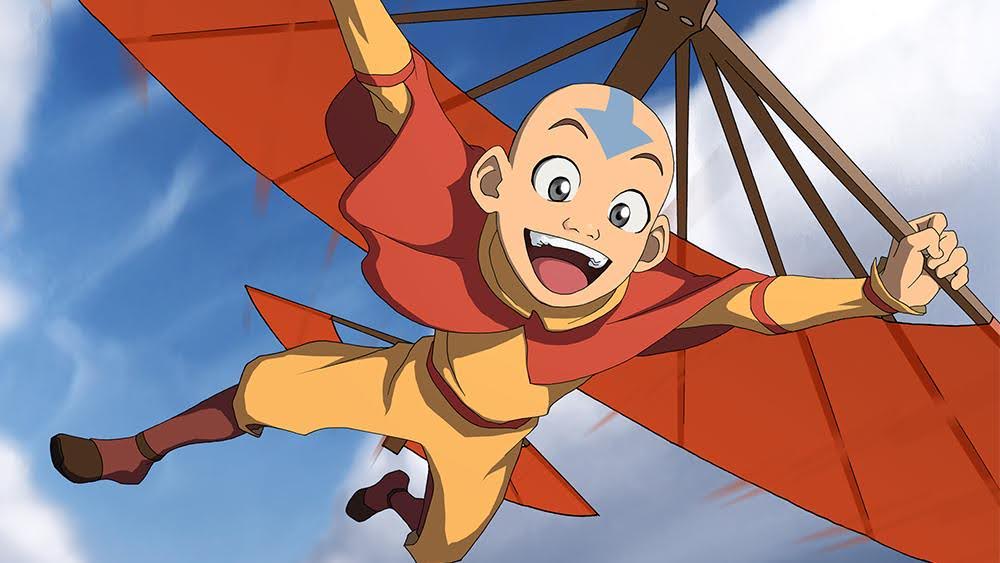
Building a Strong Fantasy Structure
The sheer scale of fantasy stories can make it tricky to write and feel bloated. That’s where structure comes in!
So, which structures work for fantasy and how can we best use them to write a cohesive story?
Use the Three-Act Structure (Flexibly)
While many fantasy screenplays follow the classic three-act structure, you may find that epic tales benefit from slightly extended beats. Just like this:
Act One
Introduce the protagonist, world and inciting incident that changes the status quo.
Act Two (Part 1)
Here is when the journey begins and the hero meets their allies and enemies. The stakes rise.
Midpoint
A revelation or major setback changes things.
Act Two (Part 2)
The consequences of the midpoint escalate, with the hero’s goal feeling more of out of reach.
Act Three
The final confrontation followed by tying up loose ends. The world and the hero are then transformed forever.
Use Character Arcs to Reflect the Stakes
Your protagonist’s emotional arc should mirror the physical journey they take. If they begin as a selfish character, perhaps their growth is towards sacrifice. On the other hand, if they begin naïve, perhaps they become a hardened realist or visionary leader.
To allow your characters to reflect the stakes, you can also use subplots from sidekicks and love interests to mentors to explore alternate paths the protagonist could have taken. This deepens the emotional impact of the story’s climax when you reach it.
Case Study #4 | Frodo Baggins
Take Frodo Baggins from The Lord of the Rings. He is tasked with destroying the One Ring, a powerful artifact that could enslave the whole of Middle Earth if returned to the Dark Lord Sauron.
He starts off as a humble, good-natured hobbit who’s naïve to the dangers of the world. Over the course of his journey, he becomes weary, paranoid and burdened by the thing he carries.
By the climax of the film trilogy, he can’t let go of the Ring. Gollum’s intervention at the critical moment atop Mount Doom is what causes the Ring to be destroyed for good.
While his mission succeeds, Frodo is spiritually and emotionally shattered. So much so that he leaves Middle Earth, no longer able to lead a normal life. A bittersweet conclusion that reinforces the idea that great deeds in fantasy have lasting and personal consequences.
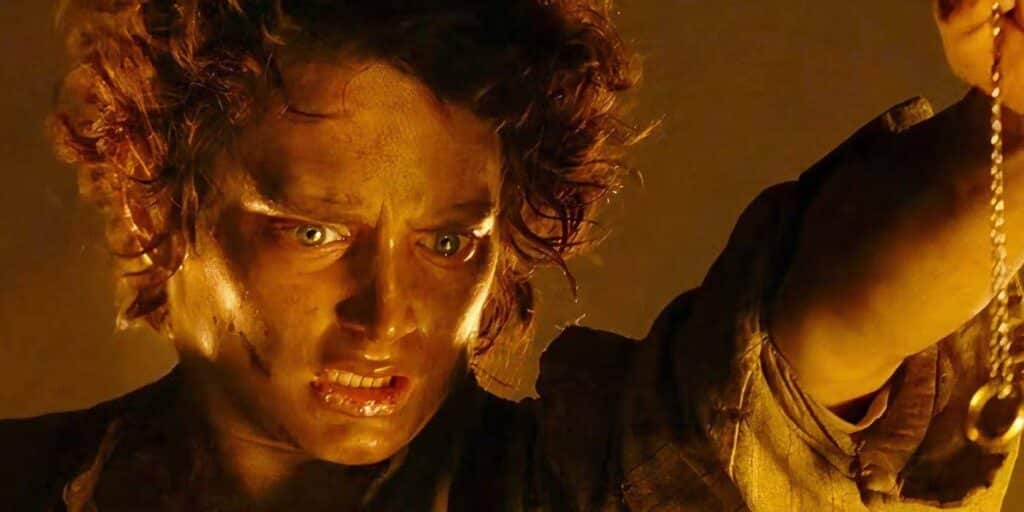
Tropes to Embrace or Avoid
Fantasy is full of tropes. Some are beloved but others have worn thin. While tropes can be a fine balance to achieve, there are ways to successfully use them. If you know how.
Read on to find out our ultimate lists of fantasy tropes: some to consider and some to avoid or use with caution.
Tropes to Consider
- The reluctant hero
Works when paired with a fresh motivation. - The ancient prophecy
Effective if subverted or reinterpreted. - A magical relic
Ideal when the relic carries emotional weight that means something to a character. - Mentor figures
Can be compelling if flawed or morally ambiguous.
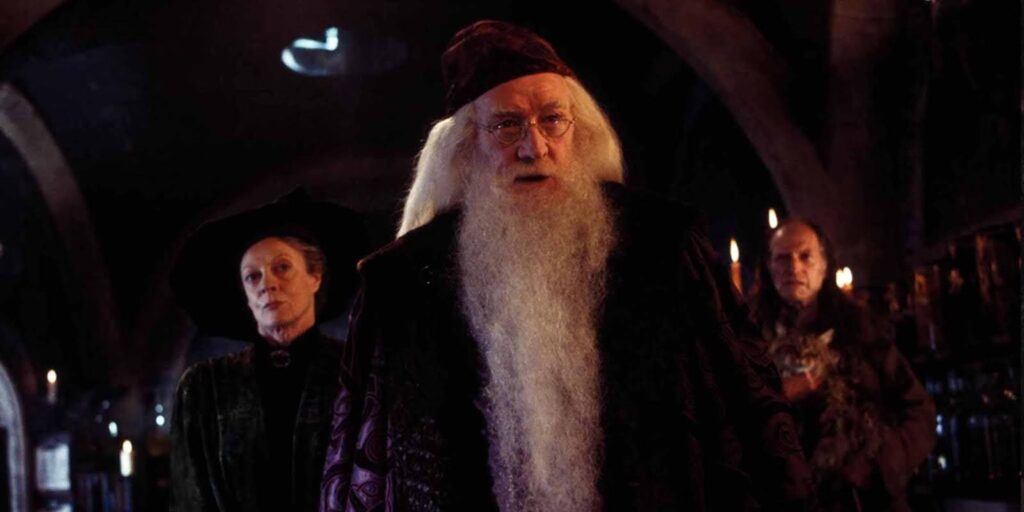
Tropes to Avoid (Or Use with Caution)
- The evil race/species
Can be risky and is often rooted in problematic stereotypes which should be avoided. - The damsel in distress
Avoid unless you’re inverting or interrogating the trope. - The chosen one
Needs a twist or burden to avoid this trope becoming too predictable. - Over-explained backstories
Keep only what’s necessary to move the story forward.
If there’s a trope you’re eager to use but it feels overused, always ask yourself what it would look like form a different perspective. Audiences are looking for fresh but familiar when it comes to ideas!
Writing Visually in Fantasy
Another temptation with fantasy writing is to describe absolutely everything. While this may work in a novel, it’s not ideal for the visual screenplay medium. Our job is to show, not tell.
Your screenplay should be as lean as possible, focusing on key visual details and action. Here are some elements to consider and include as you’re writing:
1. Use Active Verbs
Don’t say:
The wizard is standing by the altar.
Instead, you could write:
The wizard looms over the altar.
By just changing two to three words, we have a clearer picture of the wizard’s actions and his state of mind at this moment. Instead of ‘standing’, he’s ‘looming’ which evokes the mood of the scene.
2. Focus on Key Details
One striking image is worth a whole paragraph of description. For example, a single glowing rune can imply a rich history of arcane rituals more than an extensive history described in dialogue or action.

3. Let the Visuals Tell the Story
Allow your visuals such as costumes, setting and action provide the exposition your audience needs. A soldier with rusted armor and torn banners suggests a long, losing war, without a single word of dialogue to the audience.
4. Avoid Camera Directions
…unless absolutely necessary. Trust the director and production team to visualize your world, but give them strong, evocative material to build from.
Final Tips
Before we leave you to begin your own epic fantasy adventure, we wanted to equip you with a few more golden nuggets to set you on your way.
- Start small and introduce magic and world rules through a contained conflict before expanding to epic stakes.
- Test the rules you’ve set for the world.
- Get feedback from fellow writers, especially due to the complexities of the fantasy genre. Fresh eyes can help catch inconsistencies.
- Read successful and unsuccessful fantasy scripts. Discover what works, what doesn’t in terms of structure and style. We recommend scripts for Pan’s Labyrinth, Stardust, The Green Knight, The Witcher and The Golden Compass.
Of course, you’re also going to need kick-ass screenwriting software to match your kick-ass ideas. Here at Celtx, we offer a suite of tools to help streamline your creative process.
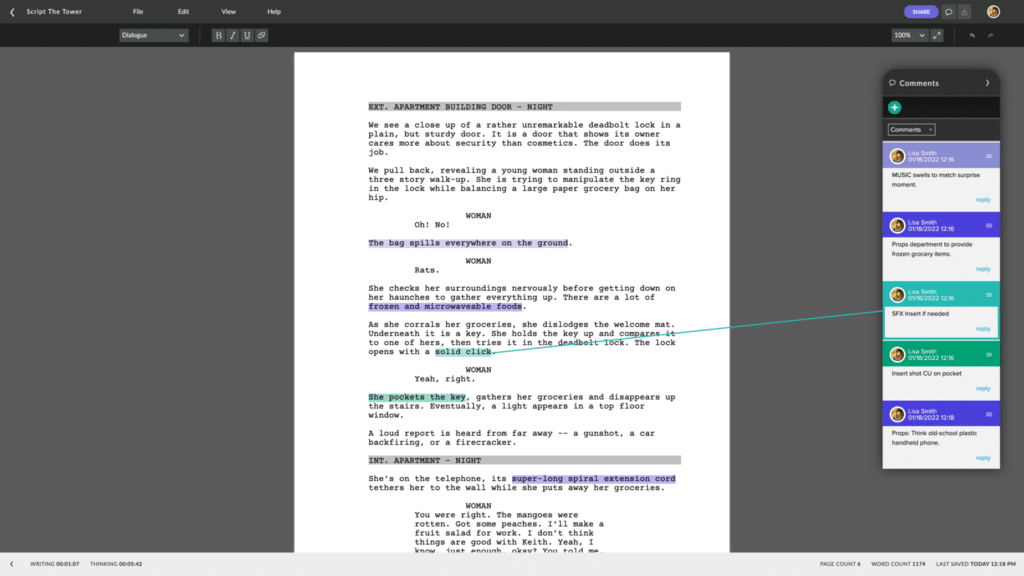
Our scriptwriting, storyboarding and production tools are especially helpful for fantasy writers both solo and in a team, trying to manage multiple plot threads and world-building elements. We focus on the formatting so you can focus on creating.
Check out our website to find out how you can draft, organize, and collaborate on your next fantasy script.
Conclusion
Writing a fantasy screenplay is a thrilling challenge. You’re not just telling a story but creating an entire world, its laws, its legends, and the lives within it. But by grounding your script in logic, building compelling characters, and writing visually and economically, your fantasy can leap off the page and onto the screen.
Whether you’re crafting a single-location fantasy noir or a multi-continent war saga, remember: Legacy and lore are the lifeblood of fantasy, but story and character are its beating heart.
Write a script in any genre with our screenwriting series:
- Part 1: Introduction: Mastering the Art of Screenwriting
- Part 2: From Dreams to Screams: How to Write a Horror Script
- Part 3: From Dreams to Screams: How to Write a Horror Script Part 2
- Part 4: Beyond the Stars: How to Write a Science Fiction Script
- Part 5: Laugh Out Loud: How to Write a Comedy Script
- Part 6: From Tears to Triumphs: How to Write a Drama Script
- Part 7: From Meet-Cutes to Happy Endings: How to Write a Rom-Com Script
- Part 8: Crafting Magic: How to Write a Holiday Movie Script
- Part 9: How to Write a Documentary Script: A Step-by-Step Guide
- Part 10: How to Write a Skit That Lands Every Time
- Part 11: How to Write a Romance Script that Sweeps Audiences Away
- Part 12: From Clues to Conclusions: How to Write a Mystery Script
- Part 13: From Song to Stage: How to Write a Musical Script
- Part 14: From Zero to Hero: How to Write an Action Movie Script
